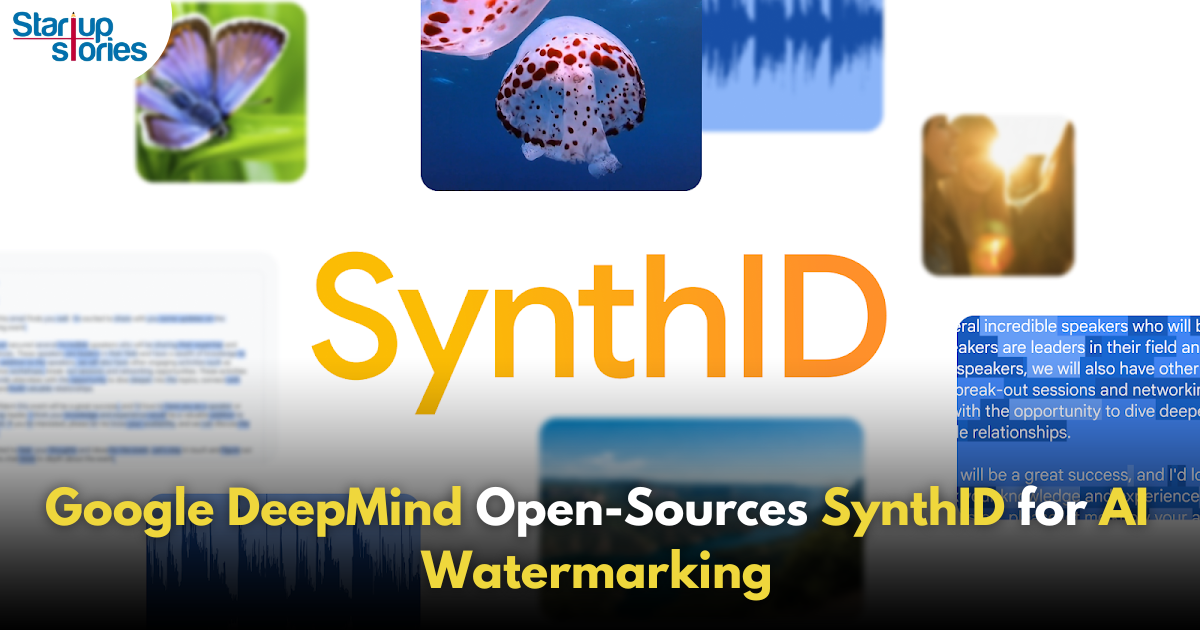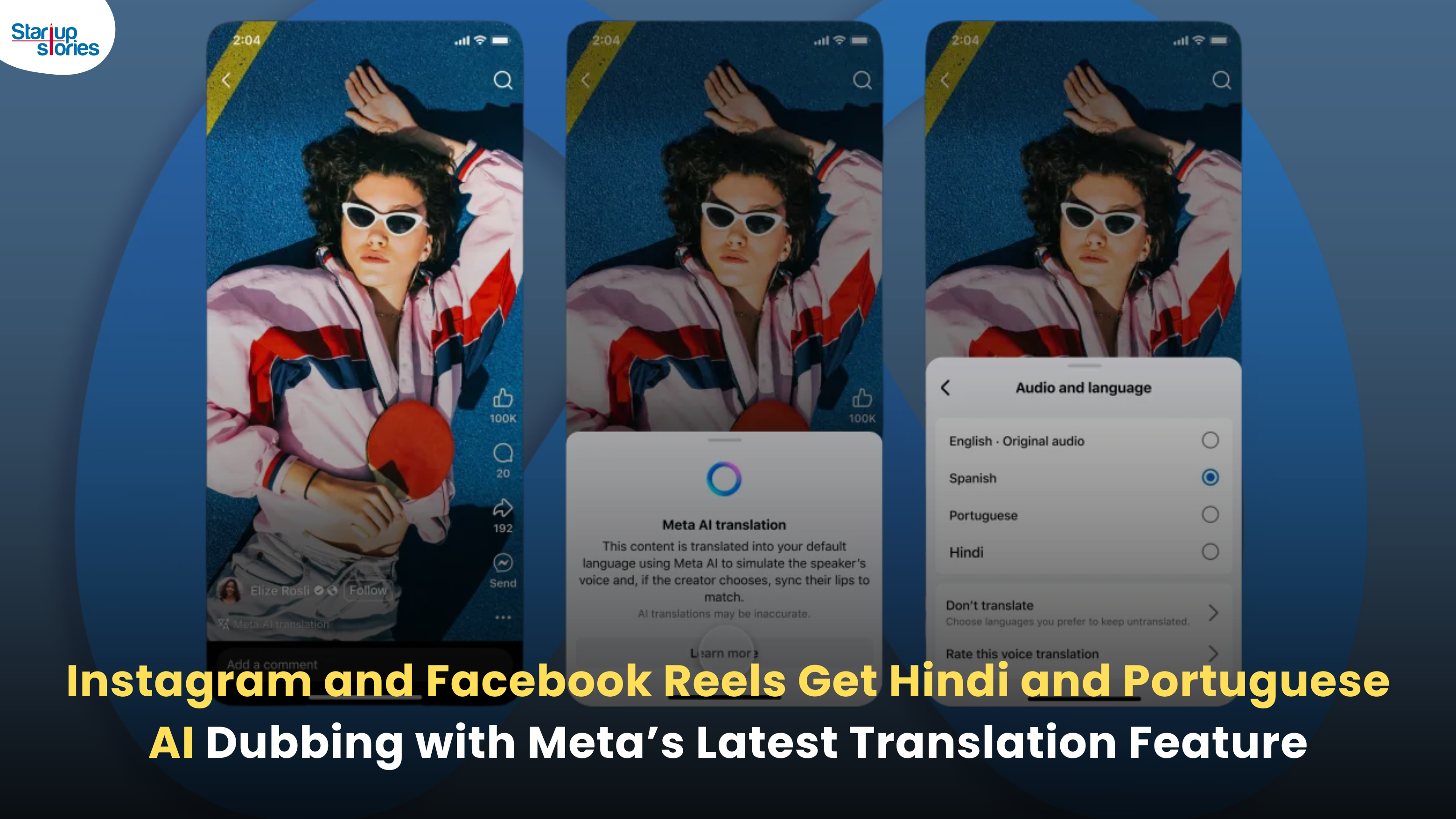Latest News
Google DeepMind SynthID AI Watermarking Technology Open-Sourced to Businesses and Developers!

Google DeepMind has open-sourced a new technology to watermark AI-generated content, named SynthID. This artificial intelligence (AI) watermarking tool can be used across different modalities, including text, images, videos, and audio. However, at this stage, it is primarily offering the text watermarking tool to businesses and developers. The goal of this initiative is to facilitate the detection of AI-generated content and promote responsible use within the AI community.
Overview of SynthID
The SynthID watermarking technology aims to ensure that AI-generated content can be easily identified. By making this tool accessible through the updated Responsible Generative AI Toolkit, Google DeepMind seeks to encourage wider adoption among creators and developers.
Features of SynthID
- Text Watermarking: Currently available for text, allowing creators to embed watermarks that indicate whether content was generated by AI.
- Cross-Modal Capabilities: Although text is the initial focus, SynthID is designed to extend its capabilities to images, audio, and video in the future.
- Open-Source Availability: Developers can access SynthID via Google’s Hugging Face listing, promoting integration into various applications.
The Importance of Watermarking
AI-generated text has proliferated across the internet, raising concerns about misinformation and content authenticity. A study by Amazon Web Services AI lab indicated that as much as 57.1% of all sentences online translated into two or more languages might be generated using AI tools. While this can lead to harmless content creation, it also opens doors for misuse by bad actors who may generate misleading information or propaganda.
Challenges in Detection
Detecting AI-generated text has proven challenging due to the nature of how these models operate. Traditional watermarking methods may not be effective since bad actors can easily rephrase or modify content. However, Google DeepMind’s SynthID employs a novel approach:
- Predictive Watermarking: The tool uses machine learning algorithms to predict subsequent words in a sentence and subtly alter them with synonyms from its database. This creates a unique watermark pattern that can later be analyzed for authenticity.
Watermarking Techniques for Different Media
For various media types, SynthID employs specific techniques:
- Images and Videos: Watermarks are embedded directly into the pixels of images or frames of videos, making them imperceptible to the human eye but detectable through specialized tools.
- Audio: Audio files are converted into spectrographs before embedding watermarks, ensuring they remain inaudible while still being detectable.
These methods aim to maintain the quality of the original content while providing a reliable means of identification.
Future Developments and Community Engagement
Google DeepMind plans to continue evolving SynthID as part of its commitment to responsible AI usage. By open-sourcing this technology, the company hopes to gather feedback from developers and stakeholders, enhancing the tool’s effectiveness over time.
Limitations and Considerations
While SynthID represents a significant advancement in watermarking technology, it is not without limitations:
- The effectiveness of watermark detection decreases if AI-generated text undergoes significant rewriting or translation.
- The technology is not designed as a comprehensive solution but rather as one part of a broader strategy to combat misinformation.
Conclusion
The launch of SynthID marks an important step toward enhancing transparency and accountability in AI-generated content. By making this technology accessible to developers and businesses, Google DeepMind aims to foster responsible practices within the rapidly evolving landscape of artificial intelligence.
As organizations increasingly rely on AI tools for content creation, initiatives like SynthID will play a critical role in ensuring the integrity of information shared online. The ongoing development and community involvement in refining this technology will be essential in addressing challenges related to misinformation and content authenticity in the digital age.
Latest News
Zerodha Reports 23% Profit Decline in FY25 as Revenues Miss Target

Zerodha experienced a challenging FY25, as its revenue fell 11.5% to ₹8,847 crore and net profit dropped 22.9% to ₹4,237 crore. This decline reflects tougher regulatory conditions, lower trading volumes, and increased operational costs in the brokerage market, all of which impacted core earning segments for the company.
Despite these headwinds, Zerodha improved its operating margin to 63.78% and built up significant cash reserves, reporting ₹22,679 crore in bank balances. Salary expenses and director remuneration increased, but disciplined cost controls helped the company maintain profitability and a debt-free balance sheet. The drop in active clients and increased compliance costs further contributed to the profit contraction.
Looking ahead, Zerodha’s resilience is supported by its robust cash position and operational efficiency. Maintaining steady margins, diversifying product offerings, and investing in technology positions the company to withstand future regulatory fluctuations and changing market sentiment reinforcing its status as one of India’s leading brokerage firms.
Latest News
Zoho Pay Debuts as India’s New UPI Challenger, Taking on PhonePe, Paytm, and Google Pay

Zoho Corporation has expanded its fintech portfolio with the launch of Zoho Pay, a UPI-based payments app built to challenge India’s top digital payment giants such as PhonePe, Paytm, and Google Pay. The new app supports peer-to-peer transfers, bill payments, QR-based transactions, and merchant settlements in a streamlined interface. Available as both a standalone app and an integrated feature inside Zoho’s privacy-driven messenger Arattai, Zoho Pay enables users to handle chats and payments in one platform, emphasizing data privacy and Made-in-India innovation.
Through seamless integration with Arattai, Zoho Pay allows users to send or request payments, split expenses, and conduct UPI-based transactions directly in their chat windows. Users can link bank accounts, scan dynamic QR codes, and receive audio confirmations of payments, ensuring speed and security. This design mirrors the simplicity of India’s leading UPI apps but is powered by Zoho’s non-advertising, privacy-first model. The integration aligns with Zoho’s mission to build a self-reliant digital ecosystem, where messaging and money management coexist securely.
In the competitive digital payments market, Zoho Pay differentiates itself through its tight business software integration with apps like Zoho Books, Zoho Payroll, and Zoho Commerce, offering small businesses unified access to payments, billing, and accounting. The company is also expanding its reach with POS devices for merchants featuring UPI QR, card payments, and instant reconciliation tools. With founder Sridhar Vembu’s vision of a ‘Chat + Pay’ ecosystem, Zoho Pay reflects a bold step toward redefining India’s fintech scene with a secure, ad-free, and locally developed alternative to global payment platforms.
Latest News
Meta Expands AI-Powered Reels Translation to Hindi and Portuguese, Enhancing Global Creator Reach

Meta has expanded its AI-powered translation feature for Reels to include Hindi and Portuguese, joining English and Spanish in empowering creators to reach a broader global audience on Instagram and Facebook. Originally launched in August 2025 with support for English and Spanish, this update now allows creators to seamlessly translate and dub their short videos, breaking language barriers across some of the largest Reels markets worldwide. The AI technology mimics the creator’s voice tone and even offers lip-syncing to ensure the translated videos feel natural and engaging for viewers.
This enhancement is especially significant for India, the largest market for Facebook and Instagram, where over 600 million people speak Hindi. Content creators who are not fluent in Hindi can now easily access this vast audience, increasing their reach and engagement across diverse linguistic groups. To maintain transparency, all translated Reels are clearly labeled with “Translated with Meta AI,” and viewers can choose to switch translations on or off based on their preference.
In addition to voice dubbing, Meta is developing features to translate captions and text stickers on Reels, making content more accessible even without sound. These AI translation tools are available free for eligible public Instagram accounts and Facebook creator profiles with over 1,000 followers. This innovation reinforces Meta’s commitment to fostering cross-cultural content sharing and enhancing creators’ ability to connect with audiences around the world through short-form videos.











Cohjkqms
May 23, 2025 at 4:35 pm
Explore the ranked best online casinos of 2025. Compare bonuses, game selections, and trustworthiness of top platforms for secure and rewarding gameplaycasino slot machine.
criar conta na binance
June 27, 2025 at 6:04 am
Thank you for your sharing. I am worried that I lack creative ideas. It is your article that makes me full of hope. Thank you. But, I have a question, can you help me?
GO88
November 6, 2025 at 4:12 am
Tham gia cộng đồng game thủ tại Go88 để trải nghiệm các trò chơi bài, poker phổ biến nhất hiện nay.
MM88
November 7, 2025 at 12:21 pm
Khám phá thế giới giải trí trực tuyến đỉnh cao tại MM88, nơi mang đến những trải nghiệm cá cược thể thao và casino sống động.
站群程序
November 8, 2025 at 9:54 am
采用高效谷歌站群策略,快速提升网站在搜索引擎中的可见性与权重。谷歌站群
Kuwin
November 11, 2025 at 5:23 pm
kuwin sở hữu kho game đa dạng từ slot đến trò chơi bài đổi thưởng, mang đến cho bạn những giây phút giải trí tuyệt vời.
谷歌站群
November 14, 2025 at 9:09 am
专业构建与管理谷歌站群网络,助力品牌实现全域流量的强势增长。谷歌站群
MM88
November 15, 2025 at 3:07 pm
Với giao diện mượt mà và ưu đãi hấp dẫn, MM88 là lựa chọn lý tưởng cho các tín đồ giải trí trực tuyến.
iwin
November 20, 2025 at 7:49 pm
iwin – nền tảng game bài đổi thưởng uy tín, nơi bạn có thể thử vận may và tận hưởng nhiều tựa game hấp
J88
November 29, 2025 at 2:08 pm
Đến với J88, bạn sẽ được trải nghiệm dịch vụ cá cược chuyên nghiệp cùng hàng ngàn sự kiện khuyến mãi độc quyền.